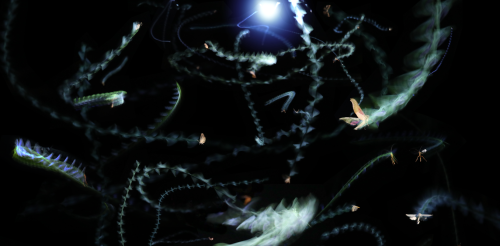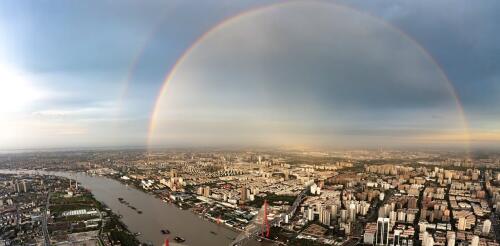Light
Winters on the Great Lakes are harsh – so much so that the scientists who work there often focus on the summer months, when tiny microbes at the base of the food chain were thought to be most productive. However, emerging research is changing our understanding of these winter ecosystems and shining a light on a vibrant world of winter activity just below the ice. Scientists discovered in the early 2000s that communities of diatoms – tiny photosynthesizing algae – were thriving in the light under the wind-swept lake ice. But, it turns out, that was only part of the story. As the Great Lakes’ winter ice disappears – it hit record lows in the winter of 2023-24 – new analyses show that some diatoms appear to have a different way to create energy and survive in the dark, turbid ice-free water until summer. A thin slice of Lake Erie ice collected by a scientist has diatom algae growing on the bottom....
It’s an observation as old as humans gathering around campfires: Light at night can draw an erratically circling crowd of insects. In art, music and literature, this spectacle is an enduring metaphor for dangerous but irresistible attractions. And watching their frenetic movements really gives the sense that something is wrong – that instead of finding food and evading predators, these nocturnal pilots are trapped by a light. Sadly, centuries of witnessing what happens have produced little certainty about why it happens. How does a simple light change fast, precise navigators into helpless, flittering captives? We are researchers examining flight, vision and evolution, and we have used high-speed tracking techniques in newly published research to provide an answer. The reason insects fly around light will surprise you. Moths to a flame? Many old explanations for this hypnotic behavior have not fully panned out. An early notion w...
Curious Kids is a series for children of all ages. If you have a question you’d like an expert to answer, send it to curiouskidsus@theconversation.com. Can rainbows form in a circle? – Henry D., age 7, Cambridge, Massachusetts The legend goes that there is a pot of gold hidden at the end of every rainbow. But is there really an “end” to a rainbow, and can we ever get to it? Most us go through life seeing rainbows only as arches of color in the sky, but that’s only half of what is really a circle of color. Normally, when you look at a rainbow, the Earth’s horizon in front of you hides the bottom half of the circle. But if you are standing on a mountain where you can see both above and below you, and the sun is behind you and it is misty or has just rained, chances are good that you will see more of the rainbow’s circle....


